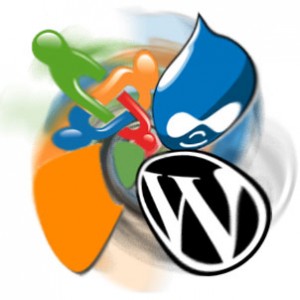 Erik Hinton at Talking Points Memo has announced their completely rebuilt content management system (CMS), and it looks very good. They’ve taken on the problems inherent in most CMSes (including but not limited to: mutually hostile subsystems, idiosyncratic workarounds, legacy components that can’t be properly maintained or upgraded, and the frail network of patch jobs holding it all together), and created something marvelously suited to running a major, news cycle-driven site at scale. From TPM:
Erik Hinton at Talking Points Memo has announced their completely rebuilt content management system (CMS), and it looks very good. They’ve taken on the problems inherent in most CMSes (including but not limited to: mutually hostile subsystems, idiosyncratic workarounds, legacy components that can’t be properly maintained or upgraded, and the frail network of patch jobs holding it all together), and created something marvelously suited to running a major, news cycle-driven site at scale. From TPM:
TPM was not unique in our plight. Having seen the CMSes of several other leading news sites, I can assure you, dear reader, the problem is widespread. Tangles of tabs, forms, fields, dropdowns and other – less standard – UI elements struggle to hang together as tongue-depressor-and-glue abstractions of frontpage news. This complexity makes it difficult to tell stories. How can you focus on the holistic page when you are concentrating on the minutiae of the analog? These wayward interfaces make simple design tasks like weeding out widows and orphans a chore. Their analytic overheard burn out editors. We needed a better solution.
I can say this with high confidence: your CMS probably sucks, too.
Nothing personal. It’s just an unhappy fact of digital publishing that most CMS setups have evolved into awkward, stubborn beasts that lack the intuitiveness, control, consistency, and features a nimble newsroom needs.
But a top-shelf system like the TPM has built takes lots of resources to create. Just about anyone who deals daily with content would want something like it, but it would take the kind of money, time, and talent most publishers can’t spare.
How’d we get here? It’s less about the CMS aging gracelessly (though it certainly has) than about publishing changing so rapidly. There’s simply more to publishing than there used to be: more media types, devices, form factors, audience segments, features, browsers, and distribution channels. Media volume and velocity keep ratcheting up, too.
Erin Griffith wrote an insightful piece in AdWeek.com wherein she outlined the challenges publishers face where technology investments are involved.
No publication has a better story about back-end chaos than BusinessWeek. Before it was acquired by Bloomberg LP, the publication sank a shocking $20 million into the back-end development of Business Exchange, a professional social networking site being built atop a proprietary content management system. Employees blamed BusinessWeek’s bloated tech investment for the company’s financial demise and eventual fire sale to Bloomberg, which paid a paltry sum—reported as between $2 million and $5 million—for it in 2009.
There are solutions. Many publishers are moving to open source CMS solutions such as Drupal and Joomla. Still others, like The Huffington Post, use customized instances of turnkey solutions like Moveable Type and WordPress that work very well at a low overall cost.
Other solutions, like Daylife’s Publisher Suite, offer solutions that are CMS-agnostic and solves many of the systemic problems publishers and brands face daily with legacy (and hard-to-replace) CMSes. With an off-the-shelf SaaS application like the Publisher Suite, you get features, functionality, editorial and analytical intelligence, and workflow improvements with nothing but a quick initial integration. While it plays well with them, the Publisher Suite operates on a different model than a typical CMS. It’s something closer to what TPM has built, turning the massive centralized system into a series of cloud apps. At the center is a management dashboard and the Daylife API powers it all. But it’s nothing like the monolithic CMS so many struggle with today; the discrete app model makes working with media more flexible and dynamic. And as Daylife develops new apps and features – driven largely by clients requests – those fold gracefully into the Suite, instantly available to all.
There are many systems out there perfectly well-suited for publishing at one level or another, to one audience or another, etc. And it’s always possible to devote the time, effort, and large sacks of money needed to build and maintain a bespoke system. But the open-source and SaaS application models available today may offer far less expensive solutions while bringing greater staff efficiency and audience engagement benefits to the table.
